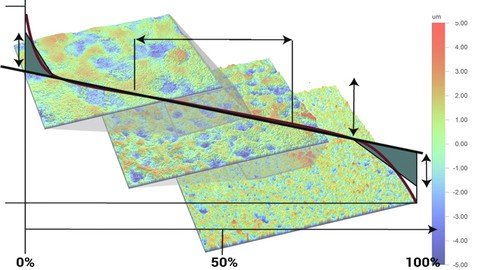
Last updated 10/2021
MP4 | Video: h264, 1280×720 | Audio: AAC, 44.1 KHz
Language: English | Size: 1.68 GB | Duration: 2h 7m
Module 3 of the Surface Texture and Tribology Short Course
What you’ll learn
Learn basic surface texture parameters (surface roughness parameters)
Learn how to use parameters to specify surface texture, surface roughness, surface finish
Learn the difference between amplitude parameters, spatial parameters, (height and spatial) hybrid parameters, and functional parameters
Learn which parameters apply for functions such as sealing, appearance, fluid retention, adhesion, optical properties
Basics of surface finish specification (surface texture/surface roughness specification)
Requirements
No prerequisites. This module is part of the Surface Texture and Tribology Short Course, so viewing Module 1 (Introduction, Instruments) and Module 2 (Filtering for Roughness, Waviness & Form) ) is recommended.
Description
Will a gasket seal? Will brakes chatter? Will pits on a surface lead to corrosion or failure? These types of questions are asked daily in a vast variety of industries. Surface texture (surface finish, surface roughness) is often the key to the answers. Measuring surface texture, and analyzing it accurately, provides vital information as to how a component will perform its intended function-as it leaves the factory and throughout its lifespan.Many people in industry are familiar with measuring common surface roughness parameters such as Average Roughness (Ra) and RMS Roughness (Rq). Yet these parameters often do not tell the whole story about how a part will function. This module introduces many common and advanced surface texture parameters, starting with basic amplitude parameters such Ra, and Rq, and moving on into spatial parameters, hybrid parameters and functional parameters. We look at the definition and meaning of each parameter, as well as their strengths and shortcomings for describing how a part will fulfill its function. Most important, we show which parameters are best suited for use in common applications. Finally, we take a look at how surface texture/surface roughness is specified per the ISO 1302 standard and the ASME Y14.36 standards.This module is Part 3 of the 10-part Surface Texture and Tribology short course. The full course is available on udemy, or you can select the individual course modules of interest to you. Enter "surface roughness texture tribology" in the udemy search bar to browse the full course and modules.
Overview
Section 1: Introduction
Lecture 1 Intro to Surface Texture Parameters
Lecture 2 Amplitude Parameters
Lecture 3 Spatial Parameters
Lecture 4 Hybrid Parameters
Lecture 5 Functional Parameters
Lecture 6 3D Surface Texture Parameters
Lecture 7 Surface Texture Specification
Lecture 8 Advanced Topics
Scientists, engineers, technicians and students in the fields of automotive, medical device, aerospace, materials, polymers, and others
Homepage
https://www.udemy.com/course/surface-texture-and-tribology-3-roughness-parameters/
DOWNLOAD FROM RAPIDGATOR.NET
DOWNLOAD FROM RAPIDGATOR.NET
H4S
DOWNLOAD FROM HOT4SHARE.COM
DOWNLOAD FROM HOT4SHARE.COM
DOWNLOAD FROM NITROFLARE.COM
DOWNLOAD FROM NITROFLARE.COM
DOWNLOAD FROM UPLOADGIG.COM
DOWNLOAD FROM UPLOADGIG.COM



